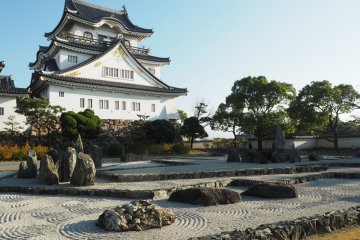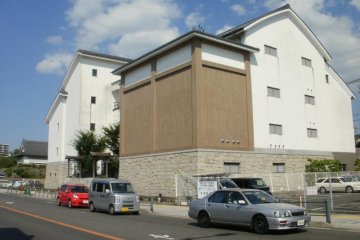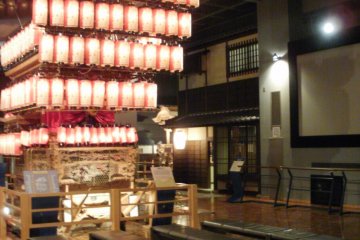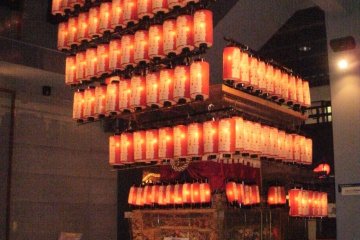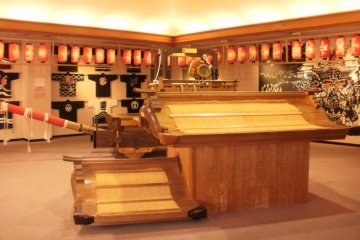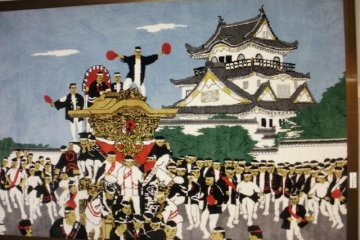The weekend of September’s Respect for the Aged holiday sees thousands of visitors pour into the southern Osaka city of Kishiwada for the year’s biggest event, the exciting Danjiri Festival, in which residents clad in traditional happi coats pull portable wooden shrines called Danjiri through seaside neighbourhoods’ narrow streets and around corners at breakneck speed. A secondary Danjiri Festival is held in Kishiwada’s mountainside half during the Sports Day holiday weekend in October, and many surrounding towns celebrate their own Danjiri Festivals at this time. However, visitors who can’t make it in time for either festival can enjoy a vicarious, multisensory experience at the Kishiwada Danjiri Hall.
Located five minutes’ walk from Kishiwada Castle, this museum commemorates the festival which began 300 years ago as a way to pray for an abundant harvest. The first-floor gallery exhibits Danjiri Festival posters, and artwork by festival fans including detailed paintings and a carpet with an impressive Danjiri scene woven into it ( displayed on the wall, not the floor). The action starts in the second-floor Event Plaza with a short film capturing the sound and energy of the festival. Visitors can see a Danjiri decked out in red chochin lanterns used in the festival’s night parade. The Event Plaza also recreates a Kishiwada castle town neighbourhood from the days of the festival’s origin, complete with a shopkeeper’s abacus and measuring scales.
The third-floor Danjiri Mini Gallery shows lovingly crafted miniature models of the Danjiri made of the same types of wood, cloth and ropes used in the real thing. One model is displayed in pieces to show the different parts of the Danjiri. A model made of scrap cardboard, and another crafted from advertising flyers, show the ingenuity of Danjiri fans.
Children may enjoy the fourth-floor Experience Corner most of all. Here, the roof and main body of a Danjiri are displayed separately, and visitors are welcome to climb on them and pose for pictures wearing traditional happi coats. Visitors can also try their hands at playing the distinctive bell and taiko drums used in the Festival. Next door is the 3-D Danjiri Scope theater, showing the view from the helm of a Danjiri. The floor under the wooden seats vibrates to match the speed of the film's action for that extra touch of reality.
Happi coats and chochin from all of Kishiwada’s Danjiri neighbourhoods are displayed on the walls of the Experience Corner as well as in the stairwell leading back down to the third floor. (The Event Plaza is also visible from this staircase, for anyone who didn’t get enough of the opening film the first time.) Finally, the Danjiri Past and Present room shows the decorations and wooden carvings on the portable shrines, along with pictures of the craftsmen and their tools. The video library offers a (Japanese-only) quiz game, and there is another photo opportunity in front of a painted Danjiri backdrop.
The museum is enjoyable and informative for anyone interested in the Kishiwada Danjiri Festival. It's also nice to be able to avoid the crowds of festival spectators.




